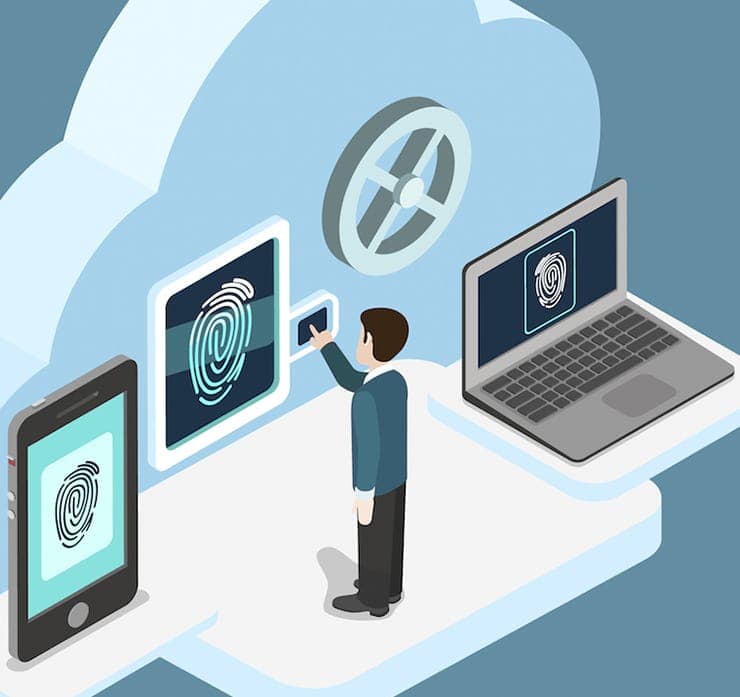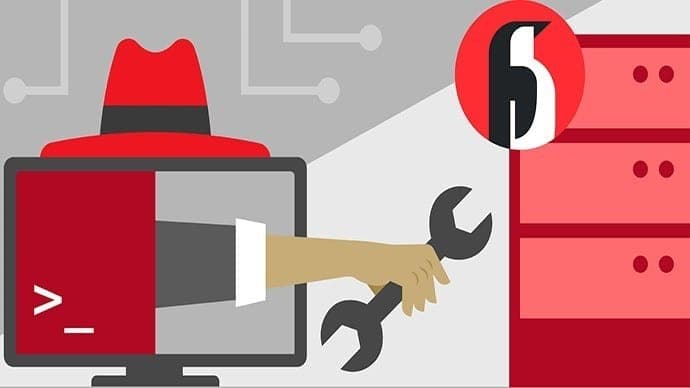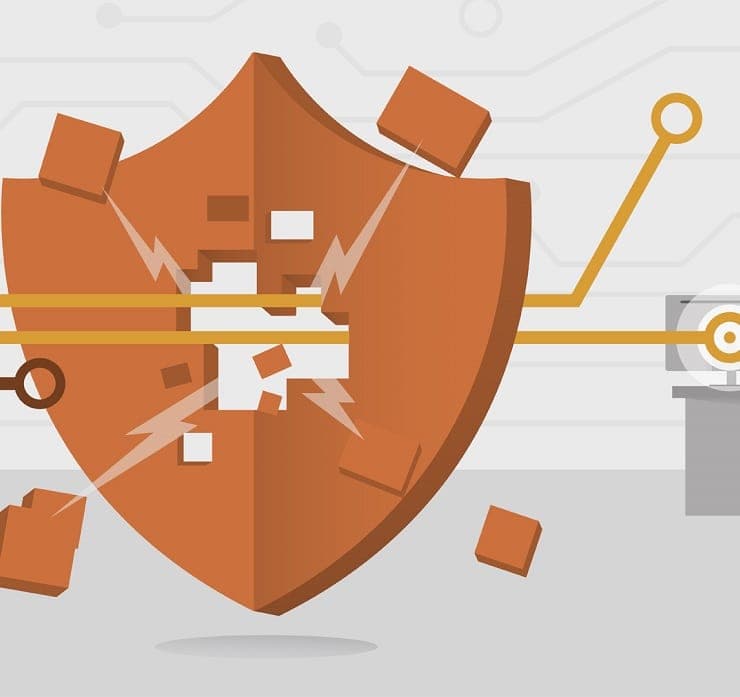Student Feedback
CAS-004: CompTIA Advanced Security Practitioner (CASP+) CAS-004 Certification Video Training Course Outline
Data Considerations (Domain 4)
Risk Management (Domain 4)
Policies and Frameworks (Domain 4)
Business Continuity (Domain 4)
Risk Strategies (Domain 4)
Vendor Risk (Domain 4)
Securing Networks (Domain 1)
Securing Architectures (Domain 1)
Infrastructure Design (Domain 1)
Cloud and Virtualization (Domain 1)
Software Applications (Domain 1)
Data Security (Domain 1)
Authentication and Authorization...
Cryptography (Domain 1)
Emerging Technology (Domain 1)
Enterprise Mobility (Domain 3)
Endpoint Security Controls (Doma...
Cloud Technologies (Domain 3)
Operational Technologies (Domain 3)
Hashing and Symmetric Algorithms...
Asymmetric Algorithms (Domain 3)
Public Key Infrastructure (Domai...
Threat and Vulnerability Management
Vulnerability Assessments (Domai...
Risk Reduction (Domain 2)
Analyzing Vulnerabilities (Domai...
Attacking Vulnerabilities (Domai...
Indicators of Compromise (Domain 2)
Incident Response (Domain 2)
Digital Forensics (Domain 2)
Data Considerations (Domain 4)
CAS-004: CompTIA Advanced Security Practitioner (CASP+) CAS-004 Certification Video Training Course Info
CASP+ (CAS-004) Certification Prep – Advanced Security Practitioner Complete Guide
(CAS-004) Full-Scale Exam Preparation and Competency Development Program
What You Will Learn From This Course
• Gain a deep understanding of the CompTIA CASP+ (CAS-004) certification objectives and the skills required to pass the exam
• Learn to design, implement, and manage secure network architectures for enterprise environments
• Develop expertise in securing applications, cloud infrastructure, and virtualization platforms
• Acquire knowledge of data security strategies including encryption, data loss prevention, and secure data storage
• Implement authentication, authorization, and access control mechanisms to protect sensitive information
• Understand threat management, including identifying indicators of compromise and executing appropriate response strategies
• Perform vulnerability assessments, penetration testing, and risk evaluations to strengthen cybersecurity defenses
• Learn to handle security breaches and manage organizational risk incidents effectively
• Gain foundational knowledge of digital forensics, including investigative techniques and evidence collection
• Create governance, compliance, and security policy frameworks to meet industry standards and regulatory requirements
• Build business continuity and disaster recovery plans to maintain operational resilience in critical situations
Learning Objectives
This course is designed to provide learners with advanced skills and knowledge required for security operations and enterprise cybersecurity management. Participants will be able to analyze complex security problems and implement comprehensive solutions that align with organizational policies and regulatory requirements. By the end of this course, learners will be able to:
• Understand the core concepts and structure of the CompTIA CASP+ certification exam
• Apply security principles to network architecture and enterprise infrastructure
• Develop secure application designs and cloud-based systems with proper access controls and encryption methods
• Identify threats and vulnerabilities, implement proactive security measures, and manage incident response processes
• Conduct penetration testing and vulnerability assessments to uncover weaknesses and mitigate risks
• Understand digital forensics procedures, including data acquisition, analysis, and reporting
• Formulate governance and compliance strategies that satisfy corporate and regulatory standards
• Design and implement business continuity and disaster recovery plans that ensure minimal operational disruption
• Apply cybersecurity frameworks, policies, and best practices to real-world business scenarios
• Enhance career readiness for roles such as security analyst, incident responder, or cybersecurity manager
Target Audience
The CompTIA CASP+ course is tailored for professionals who are responsible for advanced security operations, risk management, and governance within organizations. It is suitable for individuals who are aiming to achieve the CASP+ certification while simultaneously enhancing their practical skills for enterprise cybersecurity roles. The target audience includes:
• Security operations center (SOC) analysts seeking advanced skills in threat detection and mitigation
• SOC managers who need expertise in supervising security operations and incident response
• Threat intelligence analysts looking to understand attack vectors, threat indicators, and mitigation strategies
• Information security managers who are responsible for implementing security policies and compliance standards
• Security engineers and architects involved in designing and maintaining secure network and system infrastructures
• Application security analysts focused on securing software, web applications, and cloud environments
• Incident responders and handlers tasked with addressing and managing security breaches
• Compliance analysts monitoring organizational adherence to security frameworks, regulations, and standards
• Threat hunters responsible for identifying sophisticated threats and proactively protecting enterprise assets
• Information security officers overseeing governance, risk, and compliance programs within the organization
Requirements
The course is designed to ensure learners acquire both theoretical knowledge and practical skills necessary to advance in cybersecurity roles. While the course provides comprehensive coverage of advanced security topics, participants should meet certain requirements to maximize learning outcomes. The requirements include a combination of prior knowledge, technical skills, and familiarity with core IT concepts.
Prerequisites
To successfully participate in this course, learners are expected to have a foundational understanding of computer systems, operating systems, and networking concepts. The prerequisites include:
• Basic familiarity with operating systems including Windows, Linux, and MacOS
• Understanding of fundamental networking concepts such as IP addressing, routing, switching, and network protocols
• Basic knowledge of IT infrastructure, including servers, databases, and cloud services
• Familiarity with common security concepts, including firewalls, antivirus solutions, and intrusion detection systems
• Prior experience in IT administration or related roles is beneficial but not mandatory
• Interest in pursuing a career in cybersecurity, information security, or IT risk management
Participants who meet these prerequisites will be able to follow the course material efficiently, engage with practical exercises, and apply the learned concepts to real-world cybersecurity challenges. By building on this foundation, learners will be prepared to pursue CASP+ certification and enhance their professional competency in advanced security operations.
The course structure is designed to progress systematically, starting from conceptual understanding and moving toward hands-on application of security practices. Students will gain insights into securing enterprise networks, implementing strong access controls, performing vulnerability assessments, and managing incident response. Each module is aligned with the CASP+ exam objectives, ensuring comprehensive coverage of essential knowledge areas.
By completing this part of the series, learners will have a solid grounding in the course framework, objectives, and requirements, establishing the necessary foundation to delve deeper into advanced topics in subsequent modules. The focus on real-world application, combined with exam-oriented preparation, ensures participants can translate theoretical knowledge into actionable skills.
This course also emphasizes the practical application of cybersecurity principles in diverse organizational environments, helping participants to enhance their problem-solving capabilities, analytical skills, and technical proficiency. By integrating both conceptual understanding and hands-on practice, learners will be fully equipped to handle enterprise-level security challenges.
The curriculum prepares students for critical responsibilities, such as designing secure systems, analyzing threats, responding to incidents, and ensuring compliance with industry standards. It also provides exposure to essential tools and techniques used in the cybersecurity field, fostering confidence in tackling complex security scenarios.
Course Modules / Sections
The CompTIA CASP+ course is structured to provide a comprehensive understanding of advanced security concepts, practical skills, and real-world applications in enterprise environments. The course is divided into multiple modules, each designed to cover specific areas of security expertise and aligned with the CASP+ exam objectives. The modular approach ensures learners can progress systematically from foundational concepts to advanced security practices, allowing them to develop both theoretical knowledge and practical proficiency.
The first module focuses on enterprise security architecture and design. Learners will explore the principles of secure network architecture, including segmentation, defense-in-depth strategies, and the implementation of security controls. This module also addresses the design of secure applications, cloud services, and virtualization platforms, emphasizing practical strategies to protect digital assets.
The second module is dedicated to risk management and incident response. Participants will learn to identify and analyze threats, assess vulnerabilities, and implement risk mitigation strategies. This section covers incident handling procedures, including containment, eradication, recovery, and post-incident analysis. It also introduces participants to threat intelligence concepts and tools used to proactively monitor and respond to security events.
The third module emphasizes cryptography and data security. Learners will study encryption algorithms, secure communication protocols, and key management practices. Topics include data integrity, confidentiality, authentication, and non-repudiation, all essential for maintaining secure information systems. Hands-on exercises enable participants to apply cryptographic solutions to real-world scenarios, reinforcing both understanding and skill development.
The fourth module focuses on governance, risk, and compliance. Participants will explore security policies, regulatory frameworks, and compliance requirements applicable to enterprise environments. The module covers industry standards such as ISO 27001, NIST, and GDPR, guiding learners to develop comprehensive governance strategies that align with organizational goals and regulatory mandates.
The fifth module addresses advanced threat management and security operations. Learners will examine modern attack techniques, including malware analysis, phishing, advanced persistent threats, and social engineering. This section emphasizes proactive defense strategies, continuous monitoring, and the integration of security tools to detect, prevent, and respond to threats effectively.
The sixth module introduces digital forensics and investigative techniques. Participants will learn to collect, preserve, and analyze digital evidence, applying forensic methodologies to identify the source and impact of security incidents. This module prepares learners for responsibilities such as incident investigation, forensic reporting, and evidence handling for legal and organizational purposes.
The final module covers business continuity and disaster recovery planning. Learners will explore strategies for maintaining operational resilience during emergencies, developing recovery plans, and testing continuity procedures. This section emphasizes risk assessment, resource allocation, and contingency planning to ensure minimal disruption to critical business functions.
Key Topics Covered
The course comprehensively addresses a wide range of cybersecurity topics aligned with the CASP+ certification objectives. These topics equip learners with advanced knowledge and practical skills necessary for enterprise security operations, threat management, and regulatory compliance.
Network security and architecture is a primary topic, including secure design principles, segmentation, firewall configuration, intrusion detection and prevention systems, and secure network protocols. Participants learn to design resilient network infrastructures capable of defending against internal and external threats.
Application security is extensively covered, focusing on secure coding practices, vulnerability assessment, and threat modeling. Cloud and virtualization security are included, addressing risks associated with public, private, and hybrid cloud deployments. Participants gain expertise in implementing access controls, identity management, and monitoring solutions within virtualized environments.
Data protection and cryptography form a critical component of the curriculum. Learners study encryption methods, key management, digital signatures, and secure communication protocols. Techniques for ensuring data integrity, confidentiality, and availability are emphasized, providing participants with the ability to safeguard organizational information.
Risk management, compliance, and governance are essential topics that prepare learners to align security practices with organizational objectives and regulatory requirements. Participants explore risk assessment methodologies, security frameworks, audit processes, and policy development to ensure robust governance.
Incident response and threat management are covered in depth, including detection and analysis of indicators of compromise, threat intelligence integration, and proactive defense measures. Learners practice handling security incidents, from initial detection through containment, mitigation, and post-incident review.
Digital forensics and investigative techniques provide learners with skills to analyze security breaches, collect evidence, and report findings. This topic includes methodologies for identifying, preserving, and analyzing data in compliance with legal and organizational standards.
Business continuity and disaster recovery planning ensure that learners can develop strategies to maintain operational resilience. Topics include risk assessment, resource prioritization, recovery strategies, and testing procedures to mitigate the impact of unforeseen disruptions.
Additional topics include authentication and access control mechanisms, identity and access management, endpoint security, malware analysis, penetration testing, vulnerability assessment techniques, and continuous monitoring of enterprise systems. These topics provide practical skills that can be applied directly in professional security roles.
Teaching Methodology
The teaching methodology for the CASP+ course is designed to balance theoretical understanding with hands-on practical experience. Participants engage with structured learning modules, guided demonstrations, and real-world scenarios to reinforce knowledge and build technical competence.
Interactive lectures form the foundation of theoretical learning, explaining core concepts, principles, and frameworks. These lectures are supplemented with visual aids, diagrams, and case studies to ensure learners can relate concepts to practical enterprise security scenarios.
Hands-on labs are integral to the course, providing participants with opportunities to implement security solutions in controlled environments. Lab exercises cover network configuration, application security, cloud security, cryptography implementation, vulnerability testing, and incident response simulations. These practical exercises allow learners to apply concepts learned in lectures and gain confidence in real-world tasks.
Scenario-based learning is employed to simulate enterprise security challenges. Learners work through exercises such as identifying and mitigating threats, responding to security incidents, analyzing breaches, and conducting forensic investigations. These scenarios help participants develop critical thinking, problem-solving skills, and decision-making abilities essential for cybersecurity roles.
Group activities and discussions enhance collaborative learning, encouraging participants to share knowledge, insights, and experiences. Learners analyze case studies, evaluate alternative solutions, and engage in discussions about best practices and industry standards. This collaborative approach fosters a deeper understanding of complex security issues.
Supplemental learning materials, including study guides, reference documents, and online resources, support independent study. Participants are encouraged to review these materials to reinforce lecture content and prepare for practical assessments and the CASP+ exam.
Continuous feedback and instructor support are provided throughout the course. Participants receive guidance on lab exercises, clarification of concepts, and suggestions for skill improvement. This ensures learners remain engaged, motivated, and confident in applying their knowledge.
Assessment & Evaluation
Assessment and evaluation in the CASP+ course are designed to measure participants’ understanding, technical proficiency, and readiness for the certification exam. Multiple evaluation methods ensure a comprehensive assessment of both theoretical knowledge and practical skills.
Quizzes and knowledge checks are conducted at the end of each module to assess understanding of key concepts, terminology, and principles. These assessments provide immediate feedback and help learners identify areas requiring further study.
Hands-on lab evaluations measure practical skills, including network security implementation, application and cloud security configuration, cryptography, vulnerability assessment, incident response, and digital forensics. Instructors evaluate participants based on accuracy, efficiency, and adherence to best practices during lab exercises.
Scenario-based assessments test problem-solving and critical thinking abilities. Participants are presented with simulated enterprise security challenges and evaluated on their ability to identify threats, implement controls, respond to incidents, and apply governance and compliance strategies effectively.
Assignments and projects provide additional assessment opportunities, allowing learners to demonstrate the application of course concepts in real-world situations. These projects may include designing secure network architectures, creating incident response plans, performing penetration tests, and developing business continuity strategies.
Final assessments combine theoretical examinations with practical evaluations to ensure participants are fully prepared for the CASP+ certification exam. Performance metrics include accuracy, completeness, technical proficiency, and the ability to apply knowledge in practical scenarios.
Continuous evaluation ensures that learners receive constructive feedback throughout the course, helping them track progress, strengthen weak areas, and achieve mastery of the subject matter. Successful completion of all assessments demonstrates readiness for advanced security roles and certification achievement.
The combination of structured lectures, practical labs, scenario-based learning, group activities, supplemental materials, and comprehensive assessments ensures a holistic learning experience. Participants graduate from the course with both the theoretical knowledge and practical skills necessary to excel in enterprise cybersecurity environments, pursue the CASP+ certification, and advance their professional careers in information security.
Benefits of the Course
The CompTIA CASP+ course provides learners with a comprehensive skill set and in-depth knowledge essential for advanced cybersecurity roles. By completing this course, participants gain the ability to design, implement, and manage enterprise security solutions, addressing both strategic and operational aspects of cybersecurity.
One key benefit is enhanced career opportunities. CASP+ certified professionals are highly sought after by organizations across industries, including finance, healthcare, government, and technology. The certification demonstrates advanced expertise in security operations, risk management, and enterprise security architecture, positioning participants for leadership and specialized technical roles.
Another benefit is the acquisition of hands-on technical skills. The course includes practical exercises in network security, cloud security, application security, and digital forensics. Participants learn to implement security measures, conduct vulnerability assessments, perform penetration testing, and respond effectively to security incidents, ensuring readiness for real-world enterprise environments.
The course also strengthens participants’ understanding of governance, risk management, and compliance. Learners develop the ability to align security strategies with organizational policies, regulatory requirements, and industry standards. This knowledge enables professionals to create security frameworks that reduce risk, improve operational efficiency, and maintain regulatory compliance.
Participants gain expertise in threat intelligence and proactive defense strategies. The course covers detection of advanced threats, incident response planning, and analysis of indicators of compromise. By mastering these areas, learners are prepared to mitigate sophisticated cyber threats and protect organizational assets effectively.
Additionally, the course supports career growth through professional credibility and recognition. CASP+ certification validates advanced skills in cybersecurity, enhancing participants’ resumes and positioning them as trusted experts capable of handling complex security challenges. Employers recognize the certification as proof of competence in enterprise security operations and risk management.
The course also fosters continuous learning and adaptability. By exposing participants to current security trends, emerging threats, and modern security technologies, learners develop the ability to adapt strategies and implement innovative solutions in dynamic cybersecurity environments.
Overall, the course equips participants with a combination of technical skills, strategic knowledge, and practical experience, enabling them to advance their careers, contribute to organizational security, and achieve long-term professional success.
Course Duration
The CompTIA CASP+ course is designed to provide a thorough learning experience within a structured timeframe that balances theoretical instruction with practical application. The total duration of the course is typically 40 to 50 hours of structured training, depending on the pace of the learner and the depth of hands-on lab exercises.
The course is organized into multiple modules, each spanning several hours of focused instruction. Modules include enterprise security architecture, risk management, cryptography, governance and compliance, threat intelligence, incident response, digital forensics, and business continuity planning. Each module combines lectures, demonstrations, and hands-on exercises to ensure comprehensive understanding of the topics.
Flexible learning options are often available to accommodate professional schedules. Participants can complete the course through instructor-led sessions, self-paced online modules, or a blended learning approach that combines live instruction with on-demand study materials. This flexibility ensures learners can manage their time effectively while achieving course objectives.
Practical lab exercises are distributed throughout the course duration, allowing participants to apply theoretical knowledge in simulated enterprise environments. Lab sessions typically require additional time outside of instructional hours, contributing to the overall duration needed to complete the course successfully.
In addition to instructional hours, learners are encouraged to allocate time for review, practice assessments, and exam preparation. This ensures readiness for the CASP+ certification exam and mastery of advanced security concepts. The structured duration of the course is sufficient to cover both foundational and advanced topics, providing participants with the skills required for professional cybersecurity roles.
Tools & Resources Required
To maximize the learning experience, participants are encouraged to utilize a set of tools and resources that support both theoretical study and practical application of advanced security concepts. These tools and resources enable learners to simulate real-world environments, practice hands-on skills, and reinforce knowledge.
Virtual lab environments are a core resource for the course. Participants gain access to virtual machines and network simulations that allow them to configure secure systems, deploy firewalls, test security controls, and perform vulnerability assessments. These labs provide a safe environment to experiment and learn without affecting live systems.
Security software and tools are essential for practical exercises. Participants use tools for network monitoring, intrusion detection, penetration testing, malware analysis, and digital forensics. These tools include network scanners, packet analyzers, encryption utilities, vulnerability assessment platforms, and incident response toolkits. Familiarity with these tools prepares learners for real-world security operations.
Learning materials such as study guides, reference manuals, and practice exams are provided to reinforce lecture content. These resources cover CASP+ exam objectives, key concepts, and technical skills, allowing learners to review and consolidate their knowledge. Access to practice questions and mock exams helps participants assess readiness and identify areas for improvement.
Access to cloud platforms and virtualized environments is recommended for modules focusing on cloud security and virtualization. Participants gain practical experience configuring security policies, managing virtual machines, and securing cloud-based applications, aligning with the CASP+ exam objectives.
Collaboration and communication tools are also valuable. Participants may engage in group exercises, discussions, and scenario-based learning activities using online collaboration platforms, enhancing understanding through peer interaction and knowledge sharing.
Finally, instructor support and guidance provide an additional resource for learners. Access to experienced instructors ensures that participants can clarify concepts, receive feedback on lab exercises, and gain insights into industry best practices. This mentorship is critical for achieving both course objectives and CASP+ certification readiness.
By leveraging these tools and resources, learners can fully engage with the course material, develop practical skills, and gain the confidence needed to succeed in enterprise security roles. The combination of virtual labs, security tools, study materials, cloud platforms, and expert guidance ensures a well-rounded and effective learning experience.
Completing this part of the course equips participants with the knowledge of course benefits, structured learning duration, and necessary tools and resources. Learners are prepared to utilize these elements effectively throughout the course to maximize skill development, enhance professional expertise, and achieve CASP+ certification.
Career Opportunities
Completing the CompTIA CASP+ course opens the door to a wide range of career opportunities in cybersecurity, information security, and IT risk management. The certification is highly regarded by organizations worldwide and validates advanced skills in security operations, enterprise security architecture, risk management, and governance compliance. Professionals with CASP+ certification are well-positioned for both technical and leadership roles, offering a competitive advantage in the rapidly growing field of cybersecurity.
Security operations center (SOC) analysts are among the most common roles for CASP+ certified professionals. These individuals monitor, detect, and respond to security threats within enterprise networks. CASP+ equips SOC analysts with advanced skills in threat identification, incident response, and mitigation strategies, enabling them to manage complex security challenges efficiently.
SOC managers and cybersecurity team leads also benefit from the course. These professionals oversee security operations, coordinate responses to incidents, and ensure that security policies and protocols are properly implemented. CASP+ certification demonstrates their ability to manage enterprise security programs, guide technical teams, and maintain organizational resilience against cyber threats.
Threat intelligence analysts leverage CASP+ knowledge to study attack patterns, identify emerging threats, and provide actionable insights for proactive defense strategies. By understanding advanced threat techniques and indicators of compromise, these professionals help organizations anticipate and neutralize potential risks before they impact operations.
Information security managers and officers benefit from CASP+ by gaining expertise in risk management, governance, and compliance frameworks. They are responsible for aligning organizational security strategies with regulatory requirements, industry standards, and corporate policies. CASP+ equips them with the skills to design comprehensive security programs, conduct audits, and ensure ongoing compliance.
Security engineers and architects apply CASP+ skills to design and implement secure enterprise networks, cloud environments, and applications. They configure firewalls, intrusion detection systems, and secure network protocols, ensuring robust protection against cyber attacks. The course emphasizes practical application, enabling these professionals to translate theoretical knowledge into effective security solutions.
Application security analysts use CASP+ training to safeguard software applications and cloud services. By conducting vulnerability assessments, threat modeling, and secure coding practices, they help prevent breaches and ensure the integrity of enterprise systems. The course also provides knowledge in authentication, authorization, and identity management, which are critical for protecting sensitive information.
Incident responders and handlers are equipped to manage security breaches, analyze incidents, and implement corrective measures. CASP+ provides comprehensive training in incident response planning, containment strategies, forensic investigation, and post-incident analysis, ensuring that professionals can mitigate risks efficiently and minimize organizational impact.
Compliance analysts and risk management specialists leverage CASP+ to maintain adherence to security frameworks and regulatory standards. They develop governance strategies, monitor organizational security practices, and ensure that policies are consistently enforced. This role is essential for industries with strict regulatory requirements, such as finance, healthcare, and government sectors.
Threat hunters and cybersecurity investigators use CASP+ skills to proactively detect and mitigate advanced persistent threats. By analyzing network activity, monitoring for anomalies, and responding to sophisticated attacks, they protect organizations from evolving cyber risks. Their work is critical in preventing breaches and maintaining enterprise security.
Overall, CASP+ certified professionals are in high demand across industries that rely on secure IT infrastructure, cloud computing, and digital services. The certification demonstrates advanced knowledge, technical expertise, and the ability to manage complex security challenges, making it a valuable credential for career advancement in cybersecurity.
Conclusion
The CompTIA CASP+ course is a comprehensive, career-focused program designed to prepare professionals for advanced roles in enterprise security, risk management, and cybersecurity operations. By covering core concepts, practical skills, and exam-aligned knowledge, the course equips learners with the tools necessary to succeed in highly competitive security environments.
Participants gain expertise in network security, application security, cloud and virtualization security, data protection, cryptography, incident response, digital forensics, governance, compliance, and business continuity planning. The structured modules, hands-on labs, scenario-based exercises, and practical assessments ensure that learners develop both technical proficiency and strategic understanding.
The course emphasizes real-world application, enabling participants to apply learned concepts directly to professional responsibilities. This practical approach enhances problem-solving skills, critical thinking, and decision-making capabilities, ensuring that CASP+ certified professionals are capable of managing complex security operations effectively.
CASP+ certification validates advanced knowledge and technical competence, enhancing professional credibility and opening opportunities for high-paying, specialized roles. Employers recognize the certification as proof of expertise in enterprise security, threat management, risk assessment, and regulatory compliance. This recognition translates into career growth, professional advancement, and access to leadership positions within cybersecurity and IT domains.
Additionally, the course fosters adaptability and continuous learning, enabling participants to keep pace with evolving technologies, emerging threats, and dynamic security landscapes. Professionals who complete the CASP+ course are better prepared to implement innovative security strategies, optimize organizational defenses, and contribute meaningfully to the protection of digital assets.
Completing the course not only prepares learners for the CASP+ certification exam but also equips them with practical skills applicable to daily operations in security-focused roles. From threat detection and incident handling to secure system design and governance, participants acquire a comprehensive skill set that enhances both individual performance and organizational resilience.
The combination of in-depth theoretical knowledge, hands-on experience, practical exercises, and industry-aligned content ensures that CASP+ graduates are ready to tackle enterprise security challenges effectively. The course positions participants to pursue roles such as SOC analyst, security engineer, incident responder, threat intelligence analyst, compliance specialist, or information security manager. These positions offer significant career growth, increased responsibilities, and recognition as experts in cybersecurity.
By completing this course, participants develop confidence in their ability to secure networks, applications, and cloud environments, protect data, implement robust security policies, respond to incidents, and maintain business continuity. This holistic approach ensures readiness for professional challenges and prepares learners for a future in which cybersecurity skills are increasingly critical.
Enroll Today
Enrolling in the CompTIA CASP+ course is a strategic investment in your cybersecurity career. The program provides a structured path to advanced knowledge, hands-on experience, and professional certification. By joining the course, participants gain access to expert-led instruction, comprehensive learning modules, virtual labs, practical assessments, and guidance for achieving CASP+ certification.
This course is ideal for IT professionals, security analysts, engineers, managers, and anyone seeking to advance their expertise in enterprise security, risk management, and compliance. Enrolling today allows you to develop advanced skills, enhance your professional credibility, and open doors to rewarding career opportunities in cybersecurity.
The combination of expert instruction, practical exercises, industry-aligned content, and certification-focused preparation ensures that learners can maximize their potential and achieve career success. CASP+ certification demonstrates mastery of enterprise security principles, advanced threat management, and strategic risk mitigation, positioning graduates as valuable assets to any organization.
Take the next step in your professional journey by enrolling in the CompTIA CASP+ course. Gain advanced cybersecurity skills, prepare for the CASP+ exam, and secure your place among elite security professionals capable of protecting organizations from evolving cyber threats. The course equips you with the knowledge, tools, and confidence to excel in a dynamic and highly competitive field, ensuring long-term career growth and professional success.
Completing this program provides not only technical expertise but also the strategic understanding required to make informed decisions, implement effective security solutions, and lead security initiatives within your organization. By enrolling today, you are investing in your professional development, future-proofing your skills, and positioning yourself for a successful career in the ever-expanding field of cybersecurity.













